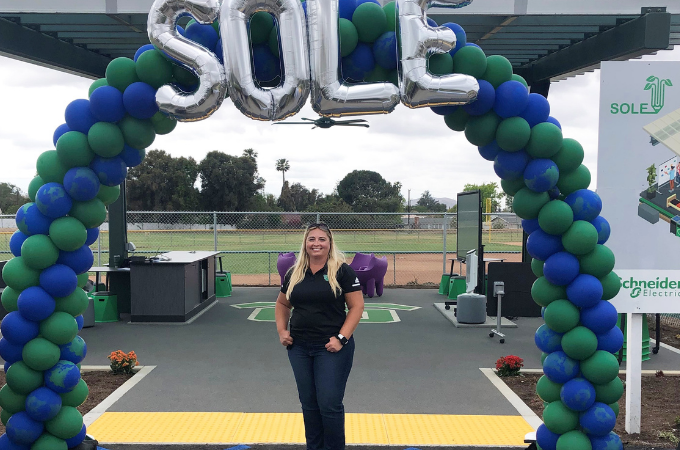
Heather Farrell at the opening of the Sustainable Outdoor Learning Environment (SOLE).
Natural Lighting. Fresh air. Open space. Energy efficiency. Welcome to the ultimate outdoor classroom at Thousand Oaks High School, which has been dubbed the Sustainable Outdoor Learning Environment (SOLE). It will be ready to roll this fall (literally) when the outdoor furniture and equipment is wheeled out from a nearby cargo container.
Environmental science teacher Heather Farrell, the powerhouse who championed the green classroom, can hardly wait to teach in a learning environment that offers students sunshine, fresh air and open space.
“We started planning for this way back in 2017, but it was timed perfectly to provide a safer environment in a pandemic,” says Farrell, a member of Unified Association of Conejo Teachers (UACT).
The classroom has no doors or walls, just a solar rooftop and battery that powers the classroom’s 86-inch touchscreen TV and LED lighting. There are also energy-efficient circulating fans designed to keep students cool in mostly sunny Thousand Oaks, a community located 39 miles west of Los Angeles. The SOLE has plenty of plugs for lab equipment and Chromebooks, too.
The space is 30 by 30 feet and can hold up to 40 students. Instead of rows of desks, there are easily movable and stackable chairs, stools and ottomans that can be assembled in any configuration for a comfortable and flexible workspace atop a rubber mat decorated with the school’s logo.
Multiple teachers, students will use the space
The SOLE will be used mostly for STEAM instruction, but any teacher or campus club is allowed to sign up and reserve the outdoor classroom.
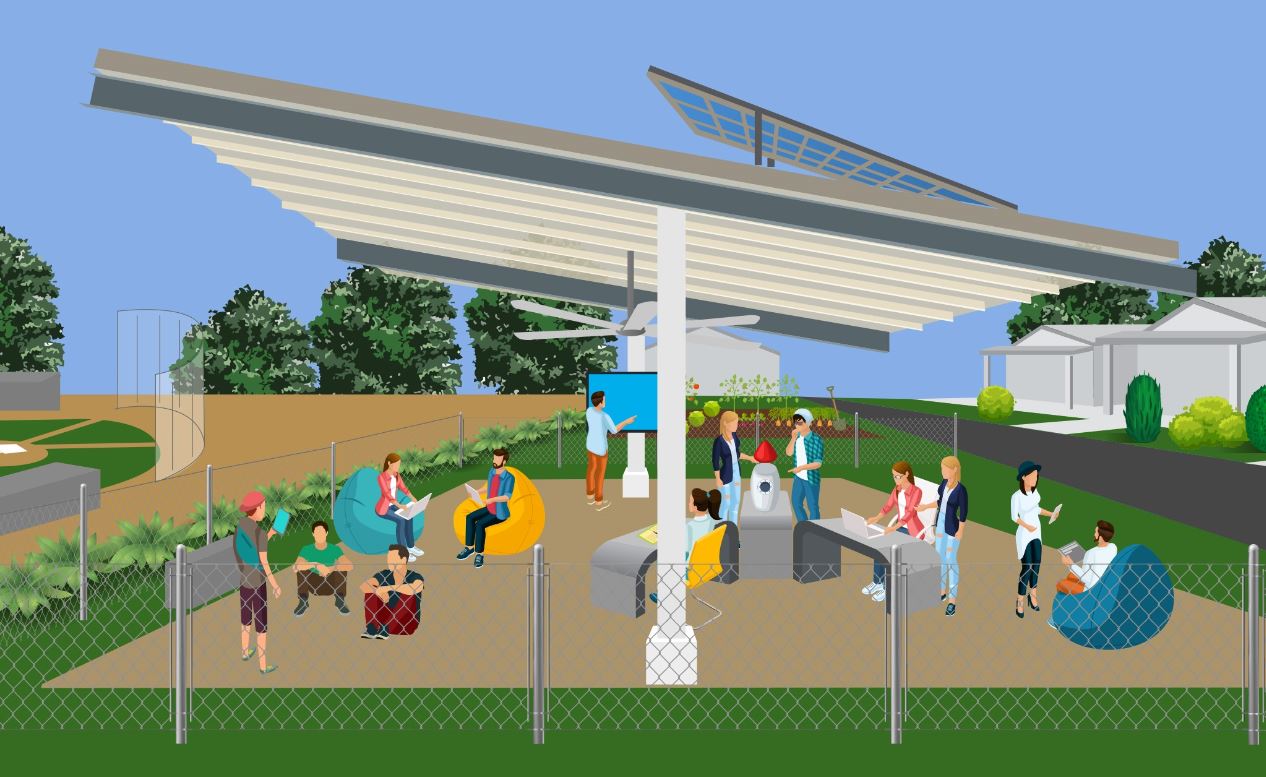
Depiction of the SOLE once it is up and running this fall.
Jeffrey Lewis, a biology and chemistry teacher at Thousand Oaks High and UACT member, is excited about the space. “Presenting ideas and concepts that I provide in the traditional classroom is one-dimensional,” he says. “The SOLE allows me to take students into nature to have them explore the world of biology as field scientists do in their careers.
“By exploring the area around the school, students can look for patterns in life and bring back their own discoveries to the SOLE, where we can discuss their implications and meanings. Creating relationships with
the environment and the life around them will be invaluable in students’ understanding of the ecosystems and biology of the world.”
Likewise, English department chair Brinden Wohlstattar looks forward to using the SOLE to help students think differently. “I view it as a place for students to shake off traditional learning and get creative,” says Wohlstattar, also a UACT member. “In my English classroom I’m excited to use it for writing brainstorms, Socratic seminars and class discussions.
“I’ve always taken my students outdoors to study texts when the weather is comfortable, so it will be that much more exciting to bring them to an official designated space where they can also access Wi-Fi, use their devices, and incorporate technology into our learning.”
How the SOLE was built
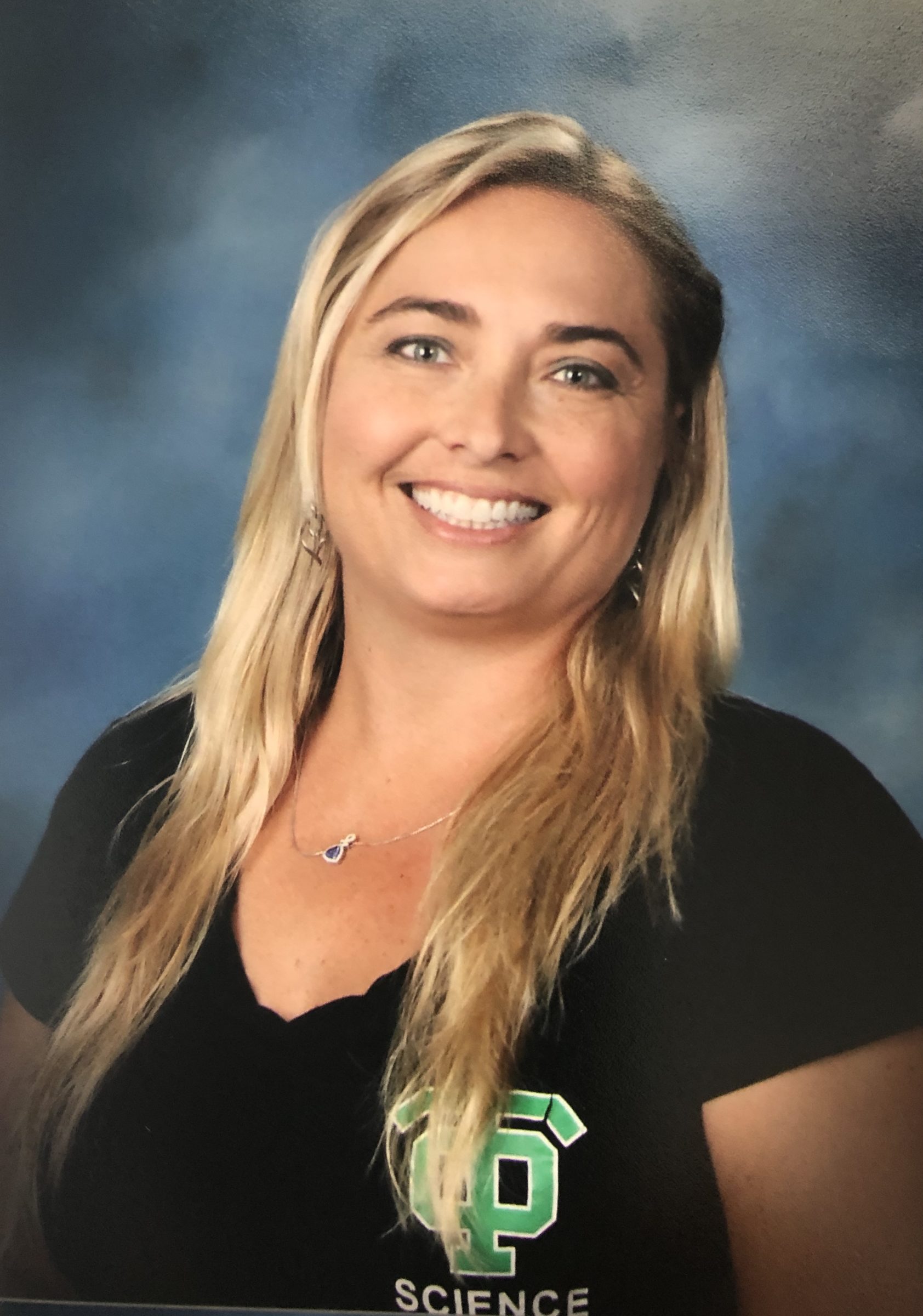
Heather Farrell
“My high school environmental science teacher inspired me to love science and the outdoors — and to protect the world around me,” says Farrell. “Today, as an environmental teacher myself, I hope this SOLE can inspire many of our students here. I know that all students, teachers and subjects will make great use of this space.”
Having an outdoor learning environment was something that Farrell thought about constantly throughout her 17-year teaching career. “I’ve always wanted to immerse my students in nature as we were exploring curriculum, but we didn’t have any place outside where we could hold class and still be productive.”
“Outdoor learning environments are effective tools to help students learn. Being outdoors also helps reduce stress and increases students’ productivity and creativity.”
—Heather Farrell, Unified Association of Conejo Teachers
In 2017, her former principal, Lou Lichti, handed her a flyer from Schneider Electric, a Paris-based multinational company specializing in sustainable electricity, showing a concept for a sustainable outdoor classroom, and asked for her opinion.
“I knew immediately that this was what had been missing,” Farrell says. “Research shows that outdoor learning environments are effective tools to help students learn. Being outdoors also helps reduce stress and increases students’ productivity and creativity.”
She made phone calls and sent emails seeking more information and checking the viability of the project. She was often told no along the way. But she never gave up. Ironically, the sponsor was right in her own backyard. Schneider Electric happened to be installing the school’s new air conditioning system in 2018. Farrell convinced program manager Marc Starkey that building this one-of-a-kind classroom would serve as an impressive promotional tool for future projects, and Schneider Electric donated $250,000 to build it.
Her new principal, Eric Bergmann, jumped on the bandwagon for the SOLE, which received approval from the school board in 2020.
“The details were worked out between myself, Dr. Bergmann, the district office and Schneider,” recalls Farrell. “I picked the location and told them my wish list, and then Schneider went looking for donors and partnerships to find everything we needed.” Partners included M Bar C Construction, Baker Electric, STS Education, FlexGround, MeTEOR Education, and Rexel USA.
The social-emotional component
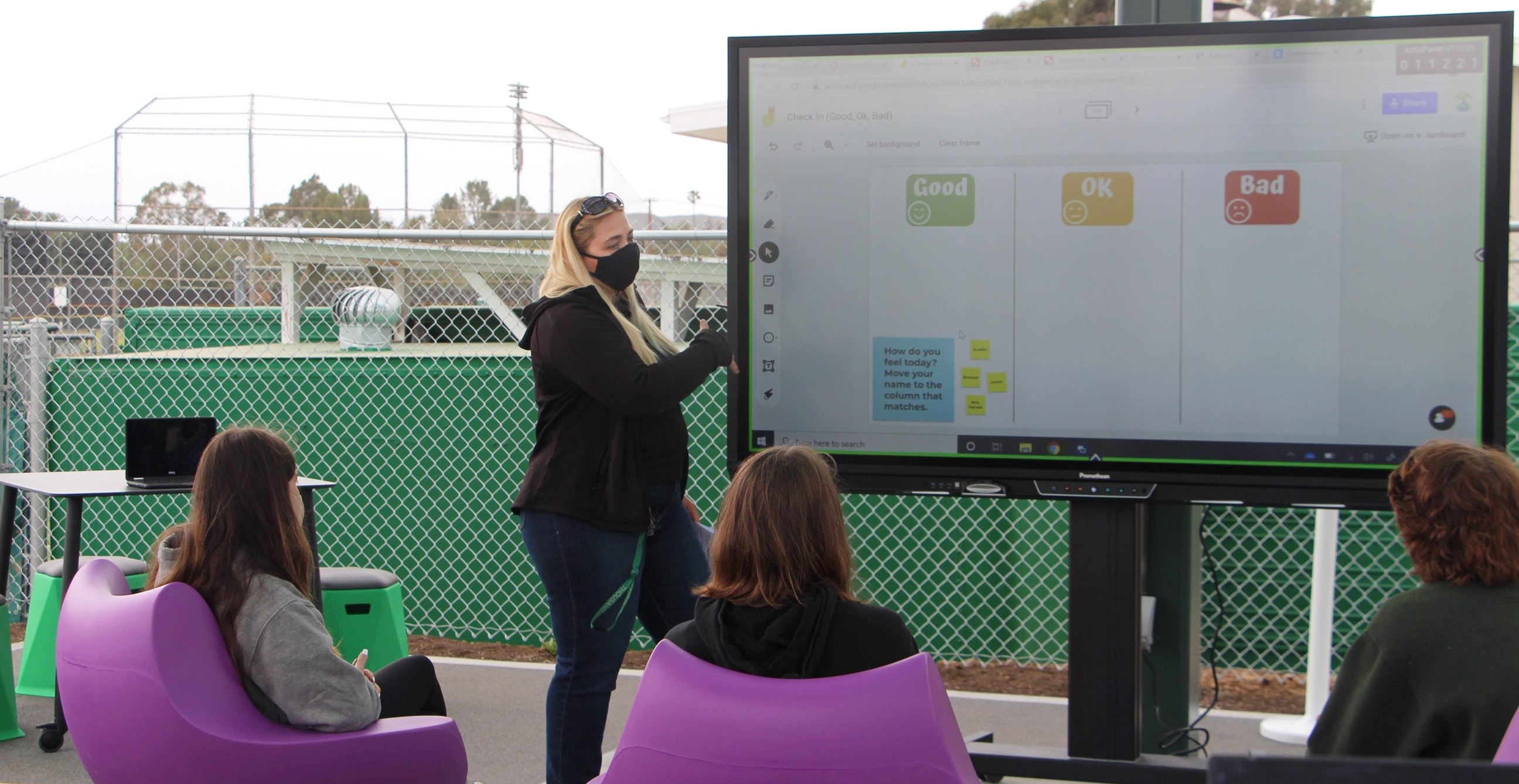
At the opening in April, Heather Farrell demonstrating how the 86-inch touch screen TV works
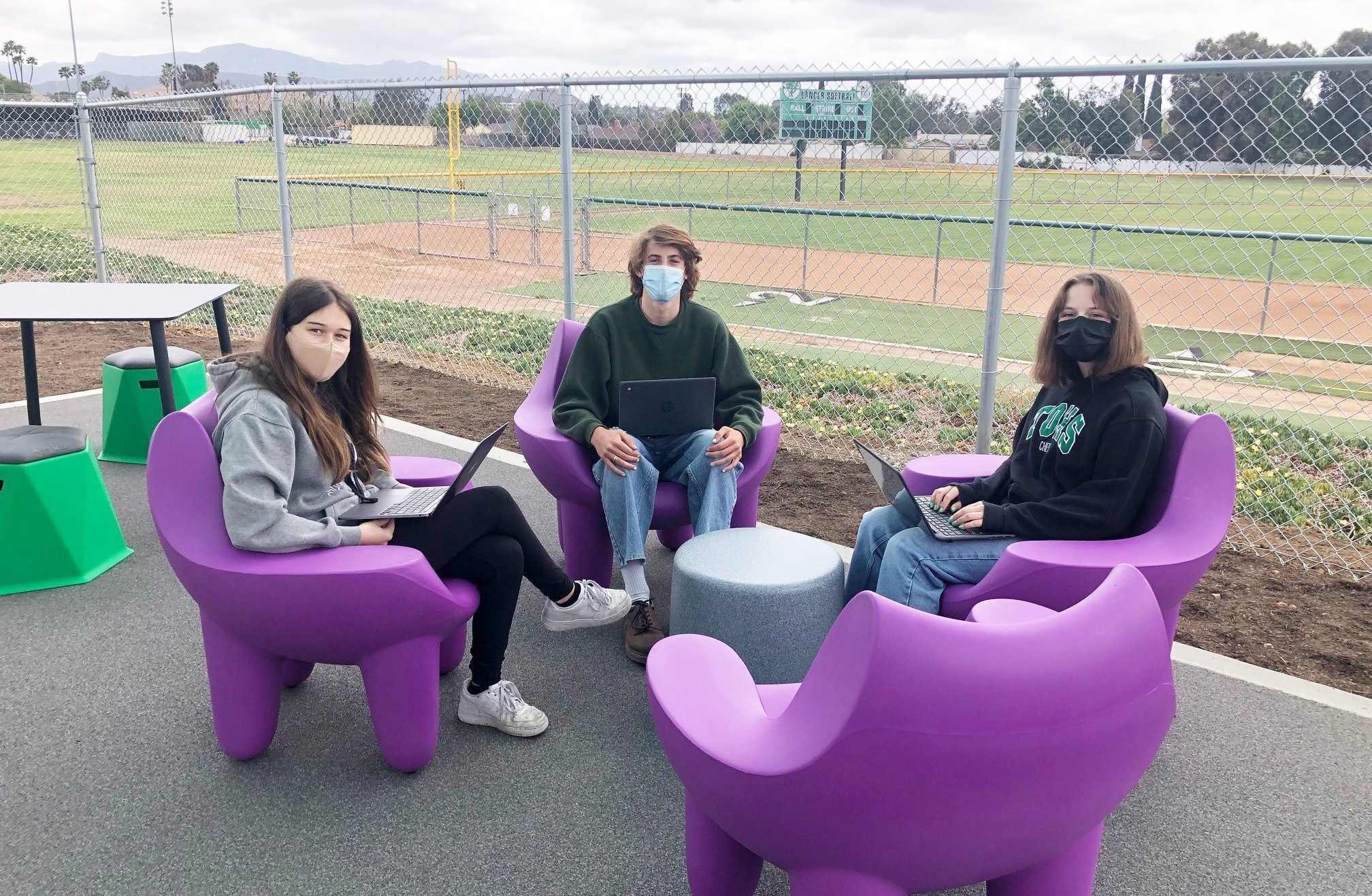
Students from Heather Farrell’s AP Environmental Science class
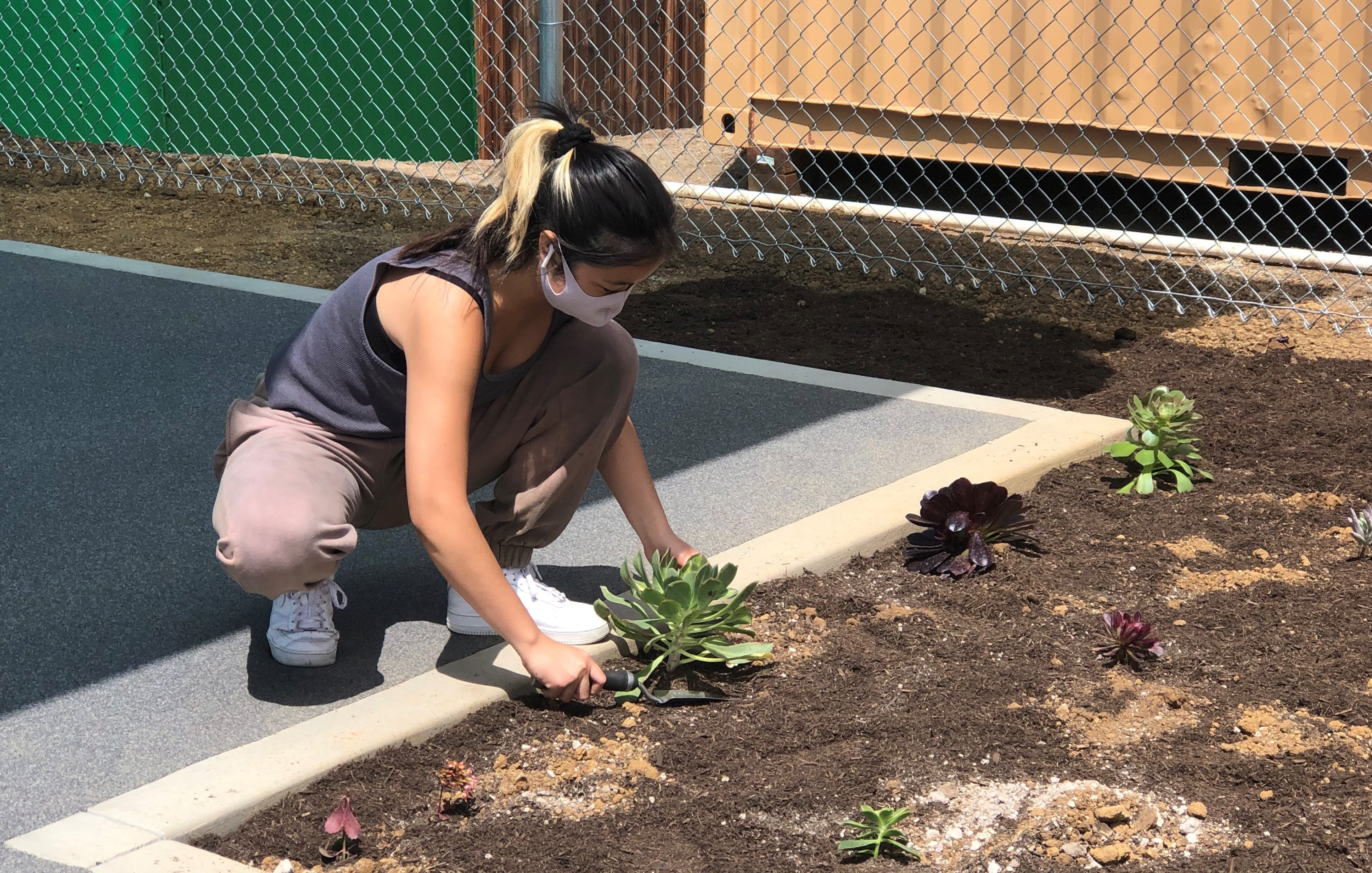
A student plants succulents
Farrell, who has been teaching virtually since March 2020, plans on using the SOLE as often as possible when she resumes in-person teaching this fall. At the ribbon-cutting ceremony in April, she and students who
attended the school’s hybrid classes demonstrated some of the SOLE’s groundbreaking capabilities to community members. Students planted a garden of succulents nearby for the occasion.
“The students said ‘This is so cool!’ and told me they couldn’t wait to use it.” Farrell believes that being outside makes students feel better in general, which makes them more open to learning.
“Now more than ever, students need social-emotional support. Connecting them with nature and teaching them outdoors can be part of that process.” It’s also a way to demonstrate that fighting climate change is possible.
“This outdoor classroom shows students that we have the technology to make smarter and better choices and that positive change can happen,” Farrell declares. “The SOLE shows students we can build a brighter future and use our resources in sustainable ways. It’s going to be a very powerful teaching tool.”